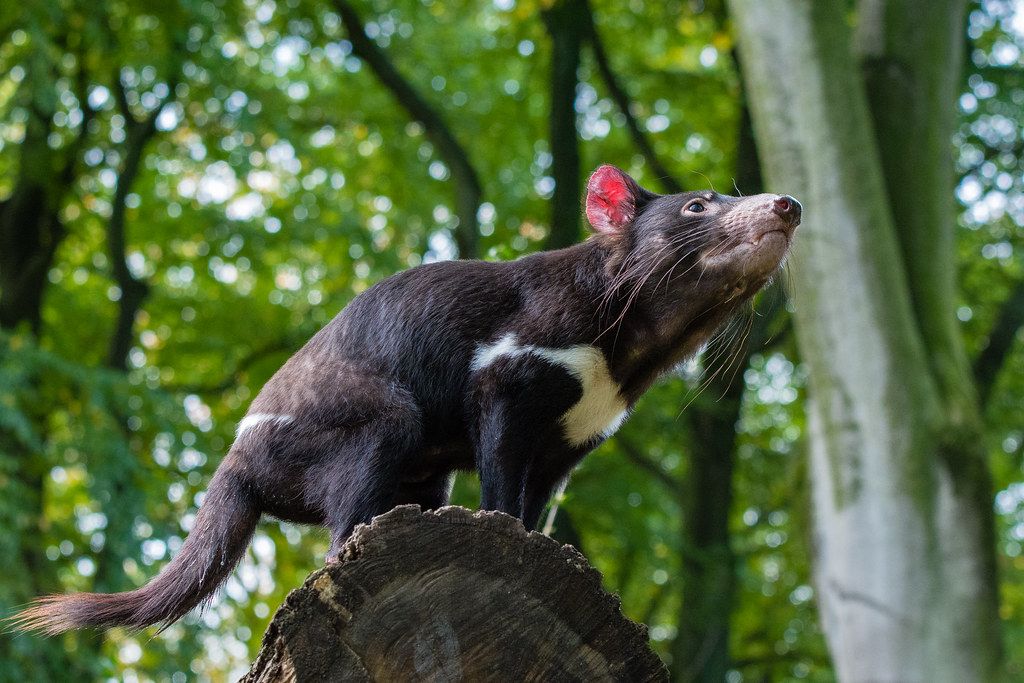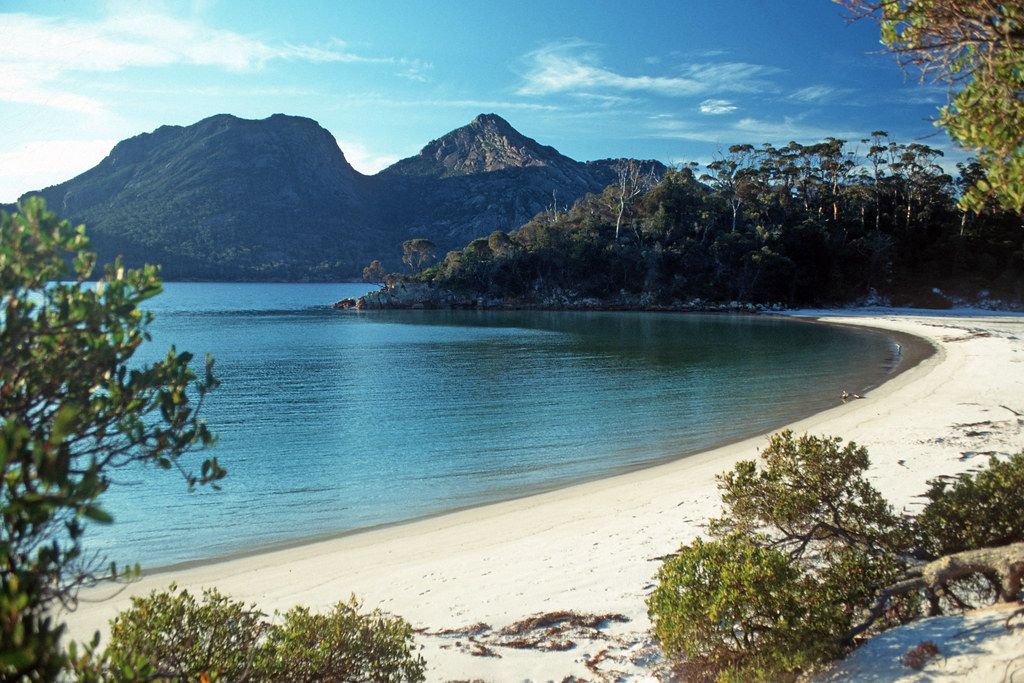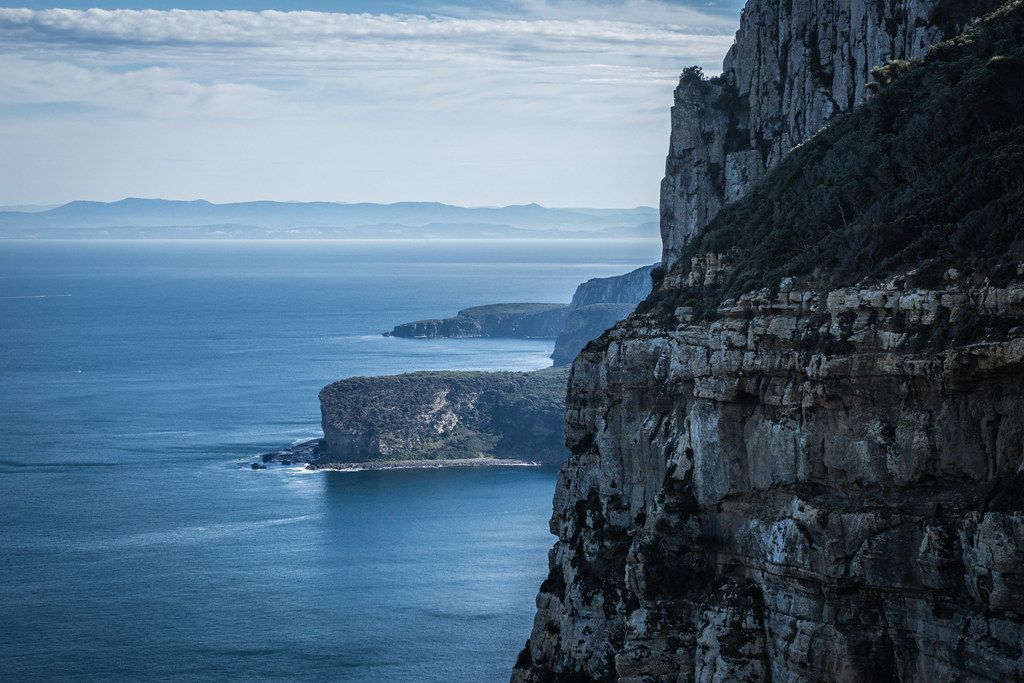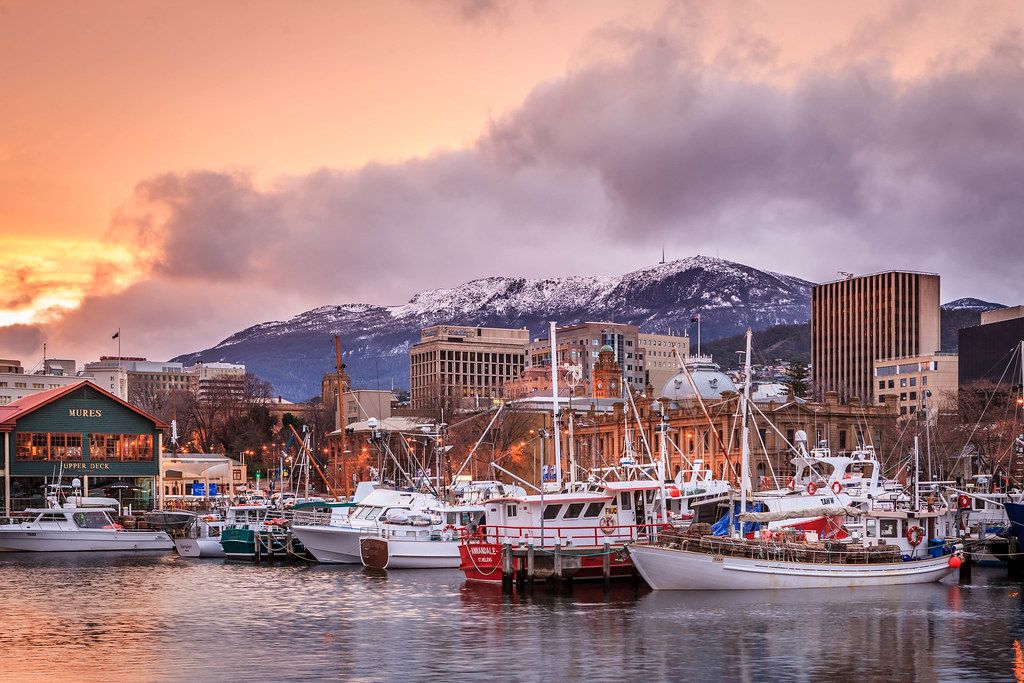Whenever people ask us, “What was your favorite place in Australia?” Tasmania is always one of the first places that comes to mind. With beautiful pristine beaches to the east, jagged green mountains and tranquil lakes to the west (a rarity in Australia), Tasmania can be easily traveled within a two week spell so it’s hard to overlook it. This amazing island is located about 240 kilometers south of the Australian mainland, separated by the Bass Strait.

Tasmania is actually the name for the main island, which is the 26th-largest island in the world, and around 1,000 smaller islands are part of it. It has an environment that offers some of the cleanest air in the world. Here are our top 10 reasons why we think you should visit Tasmania if you are traveling around Australia.
The Wildlife
Tasmania’s wildlife is as unique as its landscape, with a host of endemic species that are found nowhere else on Earth. The island is home to the iconic Tasmanian devil, the world’s largest carnivorous marsupial, which is unfortunately endangered due to a contagious cancer known as Devil Facial Tumour Disease.

You are sure to find all of Australia’s strange marsupial creatures in Tasmania including the echidna, wombat, kangaroo, wallaby, platypus, possum, and many more. If you are interested in experiencing Tasmania’s wildlife up close, there are several wildlife parks and sanctuaries, such as Trowunna Wildlife Park and East Coast Natureworld, where conservation and education are key focuses.
Cradle Mountain-Lake St. Clair National Park
Explore the numerous trails around Cradle Mountain-Lake St. Clair National Park. Main attractions are the overland track, Cradle Mountain Summit Walk, Walls of Jerusalem and Lake St Clair itself (keep an eye out for the platypus). You may also get lucky and see the endangered Spotted Quoll. Furthermore, you can enjoy a range of activities, from leisurely walks around Dove Lake to more strenuous hikes up Cradle Mountain.

There are also opportunities for wildlife watching, photography, and engaging with the park’s rich cultural heritage. Overall, the park is well-equipped for visitors, with various facilities and guided tour options to suit different interests and abilities. Therefore, it is a great place for those who want to spend a day in nature.
Bay of Fires
The Bay of Fires is a breathtaking region on the northeastern coast of Tasmania, famous for its white sandy beaches, crystal-clear blue waters, and distinctive orange-hued granite boulders covered with lichen. It stretches over 50 kilometers from Binalong Bay to Eddystone Point. This whole area is not only a feast for the eyes but also a haven for outdoor enthusiasts. The contrast in colors here makes for a great photo. You can capture the red rocks, white sands and turquoise waters, which are a beautiful sight.
Freycinet National Park
Make sure you do the Freycinet peninsula circuit because it is a natural wonder on Tasmania’s east coast. You will be rewarded with a private beach to yourself with water that has more shades of blue than you can name. This area is also known for its dramatic pink granite peaks known as The Hazards, pristine secluded bays, white sandy beaches, and abundant wildlife.

You can enjoy hiking, sea kayaking, rock climbing, and bird watching. The park also offers scenic boat tours and has several beautiful beaches for swimming and relaxation. Freycinet plays a crucial role in conservation due to its diverse range of landscapes and ecosystems, which support rare and endemic flora and fauna.
Wineglass Bay
Wineglass Bay is actually a part of Freycinet, but if you don’t have time to do the peninsula circuit, then you have to at least visit this place to see it in all its glory. The bay is accessible only by foot, which ensures its tranquil and unspoiled nature. The trek to Wineglass Bay Lookout is a popular route, offering hikers panoramic views of the bay’s stunning white sands and turquoise waters.

Interestingly, the bay’s name has a dark origin. It was once a whaling site in the 1820s, where the waters turned red with whale blood during hunts, resembling a glass of red wine. Today, it is a symbol of natural beauty and conservation, far removed from its whaling past.
Maria Island
Maria Island, known as “wukaluwikiwayna” in the local palawa kani language, is a stunning natural sanctuary off the east coast of Tasmania, Australia. It spans about 115.5 square kilometers and is part of the Maria Island National Park, which also includes a marine area off the northwest coast.
The island is the best place to see the famous Tasmanian Devil. Sadly, Devil numbers are rapidly decreasing, mainly due to infectious cancer and roadkill, so it is feared that they will soon be extinct. A recent relocation of healthy Tasmanian devils to Maria Island has seen great results especially as there are no roads/motor vehicles on the island.
Port Arthur
The historic town of Port Arthur is Tasmania’s number one tourist attraction. It was established in 1830 as a penal colony and is one of the most significant heritage areas in Australia. The site is known for its well-preserved penal facilities and natural beauty, surrounded by lush greenery and water. It was designed to house the most hardened of British criminals and those who reoffended after arriving in Australia.
Port Arthur implemented some of the strictest security measures of the British penal system and was operational until 1877. Today, Port Arthur is a popular tourist destination, offering a variety of tours that delve into the history of the colony, including ghost tours, historical tours, and even a tour of the Isle of the Dead cemetery.
Tasman National Park
Tasman National Park is a spectacular natural reserve located in the southeastern corner of Tasmania. It is known for some of the highest sea cliffs in the world, which rise up to 300 meters above the Southern Ocean. The park is home to a variety of unique rock formations, such as the Blowhole, Devil’s Kitchen, and the impressive dolerite columns of Cape Pillar and Tasman Island.

For those interested in hiking, the park offers the award-winning Three Capes Track, a multi-day walking experience that provides stunning views of the capes and the surrounding ocean. Do not miss the not-too strenuous 14-kilometer return hike to Cape Raoul. It leads through different terrain and finishes at these huge dolerite columns rising dramatically out of the ocean.
Hobart
Hobart is the capital city of Tasmania and the second-oldest capital city in Australia, established in 1804 as a British penal colony. The city’s backdrop is the majestic kunanyi/Mount Wellington, which provides a picturesque setting and a range of outdoor activities. Hobart’s deep-water port is one of the finest in the world, and the city’s waterfront is alive with activity, including the famous Salamanca Market.

You should take a look at the wacky and wonderful art exhibitions of MONA, which has an international reputation for its provocative and challenging exhibits. The city also hosts a thriving food and wine scene, with an emphasis on local produce and fine dining. Hobart has just the right blend of heritage and modern architecture and has plenty to offer for everyone’s needs.
Bruny Island
Bruny Island is a unique and picturesque destination located off the southeastern coast of Tasmania. It’s actually comprised of two land masses, North and South Bruny, connected by a narrow strip of land known as “The Neck.” Take the ferry from Kettering to Bruny Island. Prices start from 33AUD per vehicle and are free for all passengers.
With boardwalks and viewing platforms, it’s a great place to get up close to the little fairy penguins. You can also get 360° views of the island from “The Neck”. The island is known for its artisanal food scene, with local producers offering a range of gourmet products such as cheese, oysters, and honey. Visitors can enjoy these delicacies at various eateries or even visit the producers directly for a more hands-on experience.
Check out more articles about Australia:

